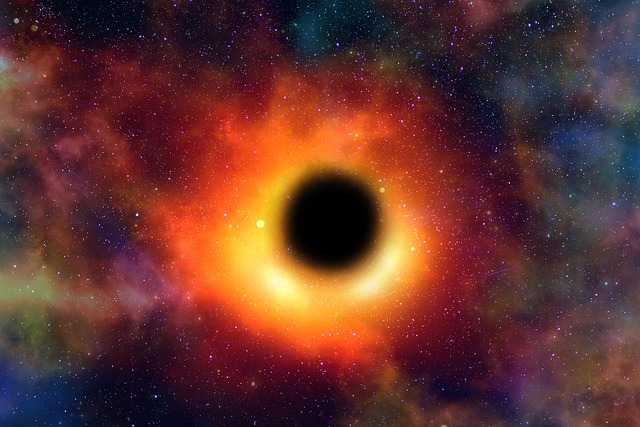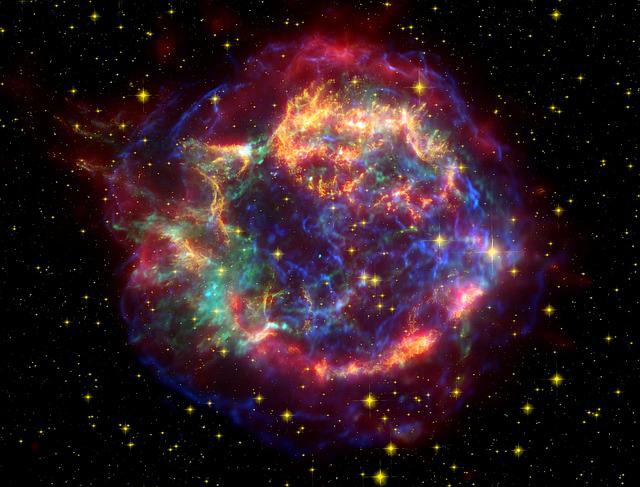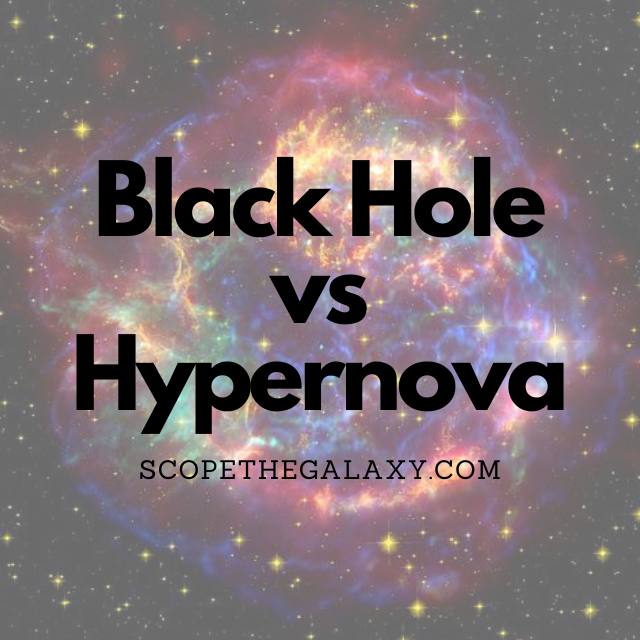*This post may contain affiliate links. This means we may make a commission if you purchase an item using one of our links*
The main differences between a black hole and a hypernova is that a hypernova is an extremely large explosion formed when a star that is 30+ solar masses explodes due to its inability to convert hydrogen to helium whilst a black hole is the darkest, densest known object in our universe, that would also form when a hypernova explosion occurs.
There are a variety of different features between a hypernova and black holes so continue reading for a more thorough breakdown of both entities down below.
What Is A Black Hole?
Table of Contents

A black hole is created when a large star about 3 – 4 solar masses large collapses below its Schwarzschild radius causing a supernova explosion. The density of the star creates a massive gravitational pocket and pulls everything within its vicinity into it.
The edge of a black hole is known as the event horizon and once something crosses this point, there is no escape. The gravitational pull of a black hole is so immense that even light is sucked inside.
All objects pulled in are subjected to an unimaginable crushing gravitational force as they are pulled toward the super dense end point of the black hole known as the singularity.
Black holes can be split into a variety of different types such as a intermediate mass black hole, stellar mass black hole and the supermassive black hole.
Stellar mass black holes are formed as described above by the death of a large star collapsing inward on itself and tend to be around 3 – 10 solar masses.
An intermediate mass black hole are larger variants of the more typical stellar mass black holes as their mass will range between 100 – 1000 solar masses.
They may form be acquiring stars within its reach, to grow in mass however, we have not discovered very many so research on these objects is still in its infancy.
Supermassive black holes are the largest types of black holes, typically found in the center of a galaxy with solar masses in the millions, upwards of multiple billions.
What Is A Hypernova?

Hypernovae are supernova explosions but on steroids.
In essence your typical hypernova will produce explosions that are anywhere from 5 times to 50 times more powerful than a supernova explosion.
The typical hypernova will be formed after the death of star that is at least 30 times the mass of our Sun, where they will generally have enough mass after the explosion to form a spinning black hole surrounded by an accretion disc and two stellar jets traveling close to it at the speed of light.
These explosion are much rarer than your typical supernova as they tend only to be observed 5 times over a million year period but, when they do happen, they’ll often produce light that is 10 – 100 times the brightness of a supernova.
Considering supernovae produce light that is often brighter than entire galaxies, a hypernova explosion would be blinding.
Not to mention extremely powerful where in the theory one explosion, that would typically have remnants sticking around a few months, would be able to power Earth for a billion, billion, billion years!
After the explosion has settled, only a black hole will remain. This is quite a juxtaposition as arguably the most luminous showcase produced in the universe tends to create celestial objects that allows no light to escape it.
How Are Black Holes And Hypernovae Similar?
The two aren’t all that similar but, it is true that a hypernova does inevitably create a black hole. So even if they’re not directly related, a Hypernova is the form taken before a black hole is created.
Differences Between A Black Hole And Hypernova
In regards to the differences between the two, they include the below:
- Black holes are as close to zero in temperature that anything can be whilst hypernova explosions generate heat that can be billions of degrees Celsius.
- Black holes are the darkest entity in the know universe whilst a hypernova explosion can produce a luminosity that outshines galaxies for many months.
- A hypernova produces dust clouds and black holes whilst a black hole does not create new entities but can increase in mass by consuming other stars.
- No light can escape the center of a black holes.
- Black holes are the densest known entities in the universe.
- Black holes have a theoretically infinite lifespan whilst a hypernova explosions lasts anywhere between 2 seconds to 2 minutes, with the remnants shining bright for many months.
- Black holes can range from your relatively small stellar mass black holes to supermassive black holes in the center of galaxies whilst hypernova explosions occur from 30+ solar masses so, their explosion size will also range. Ultimately the largest black holes are going to be bigger than the largest Hypernova explosion.
- Black holes are able to warp space and time around them.
Summary
Although one precedes the other, the reality is that a black hole and hypernova function very different from one another whether it be in regards to their size, temperature, density, lifespan, brightness and so on.
Both are amongst the most unique and certainly most devastating phenomenon’s in our universe but, function and operate in a very different manner.


